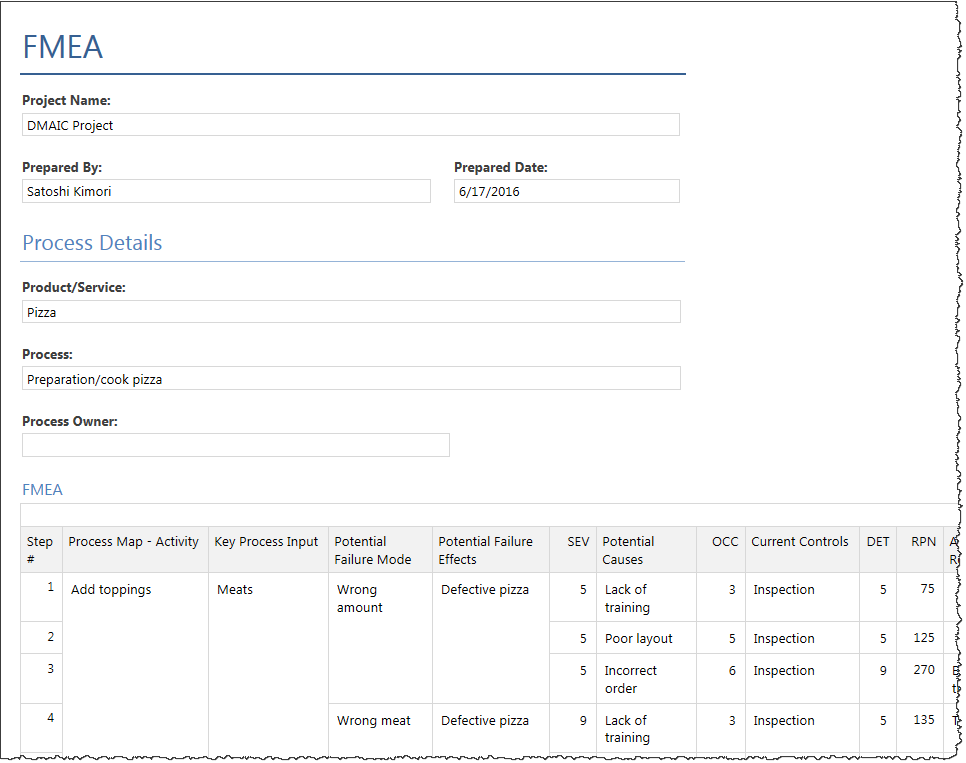FMEA is an abbreviation often used in Lean Six Sigma and quality improvement: . It's short for "Failure Modes and Effects Analysis," which basically means "look very, very carefully at how and why stuff can go wrong."
In the context of a quality project, you'd use an FMEA to systematically:
- Identify different ways a product or process might break down
- Note the effects that could result from these failures
- Figure out the potential causes of these failures and the risk associated with each
- List and rank actions you can take to reduce the risk of failure
How to Do an FMEA
The FMEA process typically includes the following:
- Identify potential failure modes for each step/input in your process.
- Determine the failure effects associated with those failure modes.
- Identify possible causes for each failure mode.
- List any controls that are in place to prevent these causes happening.
- Assign a numerical value to the Severity of the effect, the likelihood of Occurrence, and the chance of Detecting the failure mode before it causes a defect.
- Multiply the the values for severity, occurrence, and detection to get a risk priority number (RPN).
- Improve any items with a high RPN. Record the actions you've taken, and then revise the RPN.
- Maintain as a living document.
You can use just a pencil and paper to do an FMEA, although the Minitab Workspace® toolkit for process and product excellence has a built-in FMEA form that shares data with process maps and other forms you'll need for your project, making it easy to complete:

When you've completed the FMEA, you'll have the answers to these questions:
- What are the potential failure modes at each step of a process?
- What is the potential effect of each failure mode on the process output, and how severe is it?
- What are the potential causes of each failure mode, and how often do they occur?
- How well can you detect a cause before it creates a failure mode and effect?
- How can you assign a risk value to a process step, that factors in the frequency of the cause, the severity of failure, and the capability of detecting it in advance?
- What part of the process should an improvement project focus on?
- Which inputs are vital to the process, and which aren't?
- How can reaction plans be documented as part of process control?
When Can You Use the Results of the FMEA?
The FMEA is a great tool to use early on in a quality improvement project, because it collects and organize data about a process that can help you identify and scope a process improvement project. It's also good for identifying and screening potential vital X's as you complete a project. And at the end of a project, you can use the FMEA to document status, reference reaction plans, and note any further improvements the process may require over time.




